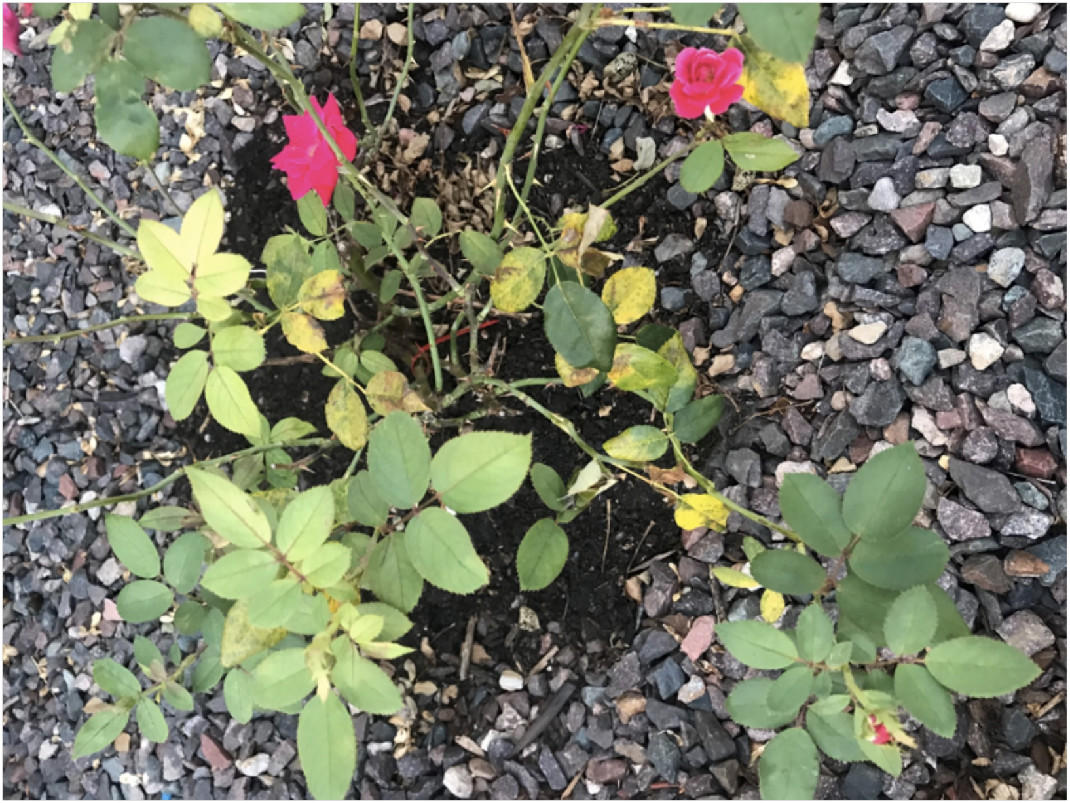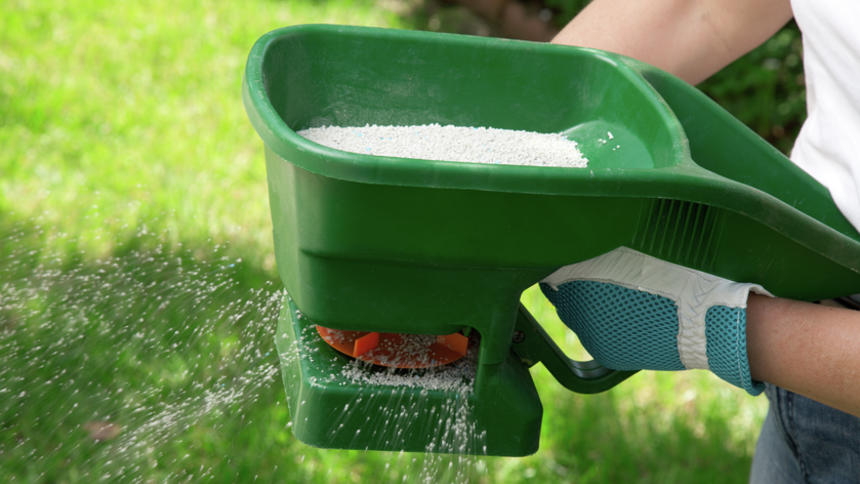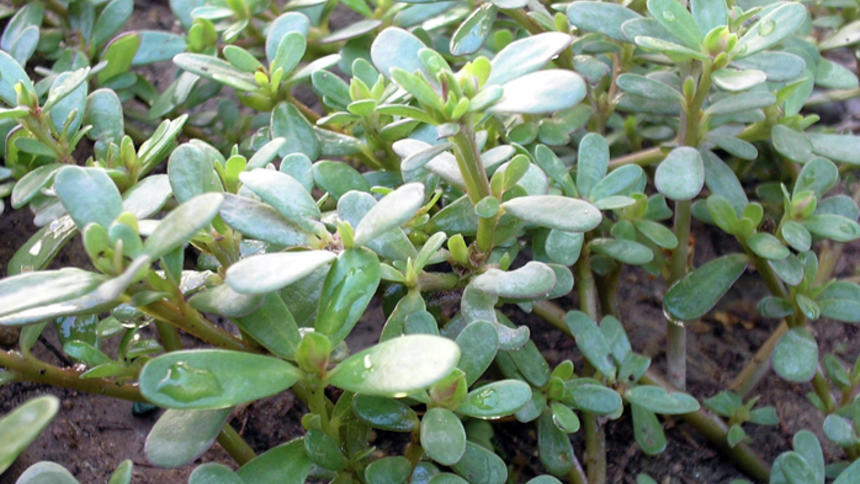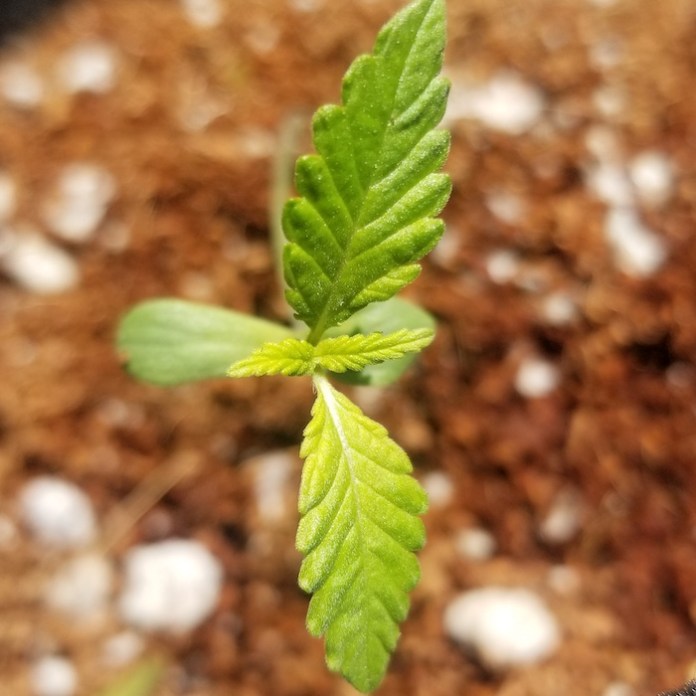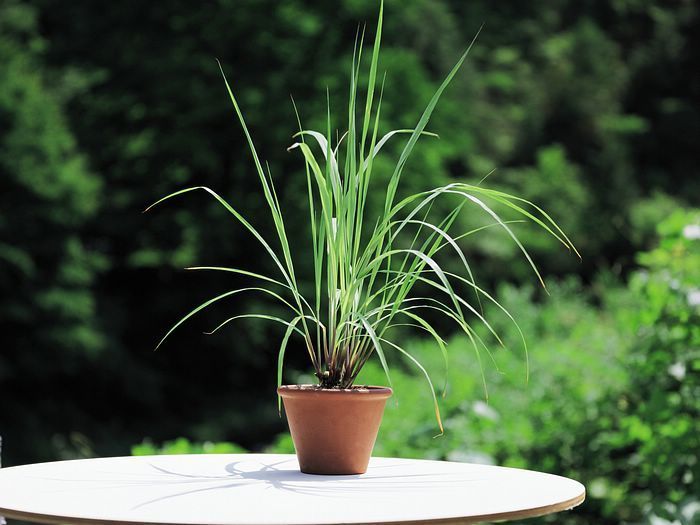Q: We purchased two rose plants back in May. They got some white growth on the leaves and some of the foliage has fallen off. What should we do? Will they die? Is the white stuff powdery mildew?
A: The most obvious symptoms on the plant match black rot, which is typically Missouri’s most persistent and consistent disease of roses. There could be some powdery mildew, which is always an issue in greenhouses, so some may have been present. A good foliar product for both powdery mildew and black rot is Spectracide Immunox, but there are others. I like it because it is widely available and doesn’t leave any noticeable residue on the leaves. Some fungicides are available as a drench, which also leaves no residue.
Besides being a crappy summer for roses, there was a fair amount of winterkill on roses. So they grew out slowly and spotty and went straight to hot humid weather, which aggravates black rot.
Q: I have this prostrate weed; it grows flat on the sidewalk from a single root. What is it? And when I spray it with a weed killer is seems to take longer to die than grass and other weeds.
A: There are two common prostrate weeds like you describe, prostrate knotweed and prostrate spurge. It is easy to distinguish, as if you break a stem on spurge it has a milky sap like dandelion. Both might be more mature when you treat them and thus not as sensitive to herbicides like seedlings. Also, grasses are quite sensitive to the most common weed killer, glyphosate (Roundup). When using it, it may be “enhanced” by adding 1-2 tablespoons of vinegar. Alkaline water reduces the effectiveness of it, especially if it is left mixed up for half day or longer.
Q: I want to do some spot spraying around some raised beds with vegetables. All that seems to be available is glyphosate. Is there anything else?
A: For better or worse, glyphosate concentrate, with it as the only active ingredient, is the simplest to use. There are “grass killers” that work well on just grasses. If wanting to kill other broadleaves, there really isn’t a product available that doesn’t pose some risk to volatilizing and moving to adjoining plants during hot and humid conditions. And there are the label restrictions. Glyphosate concentrate (with only it as the active ingredient) has a label that clearly says it is approved for spot treating in and around fruit and vegetable plantings. The distance from fruit or vegetable plantings that defines spot spraying isn’t defined on the label. I would use 4-6 feet and closer as a guideline, and that would likely include walkways in and around raised beds.
Q: The Japanese beetles have attacked. I sprayed my grapes and there were back in less than a week. I heard Sevin is the best product to use. Is that true? Would I just respray when they come back?
A: Most labels define a minimum time period to wait before reapplying. For Sevin, it is seven days. When we have a big rain, the product may wash off and reapplying is necessary. If under that time period, a different insecticide should be used. For Sevin, the situation this year is complicated. The active ingredient is being changed and both the old and new products are around.
The “old Sevin” active ingredient is “carbaryl” and is considered one of the most effective products on Japanese beetles. But it is known to wear off in about seven days. It is also an older chemistry that is considered more harmful to humans, the environment and especially pollinators.
The “new Sevin” active ingredient is “zeta-cypemethrin” and might provide longer control and is thought to somewhat repel the beetles. A similar product to this, widely labeled on fruits and vegetables, is Spectracide Triazide Insect Killer. Another widely labeled product effective on Japanese beetles is Ortho Flower, Fruit and Vegetable Insect Killer. I would try to have two products on hand if Japanese beetles are bad. They can come in huge waves after devouring all the foliage from other plants, such as elm trees. They almost seem to “swarm” out of those larges trees; you know they are bad when they are bouncing off the windshield.
Credit: www.newstribune.com

